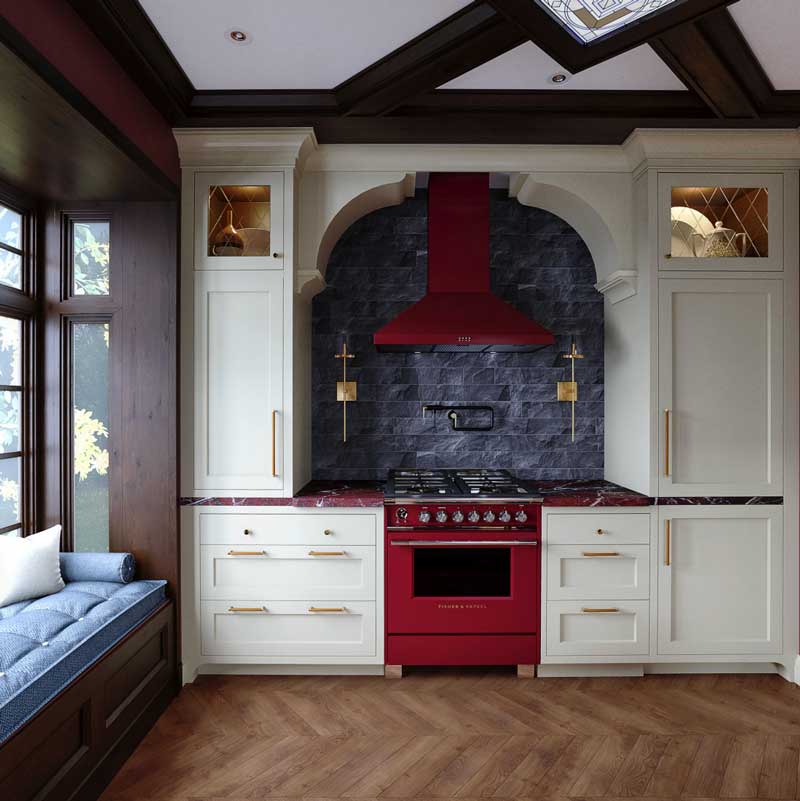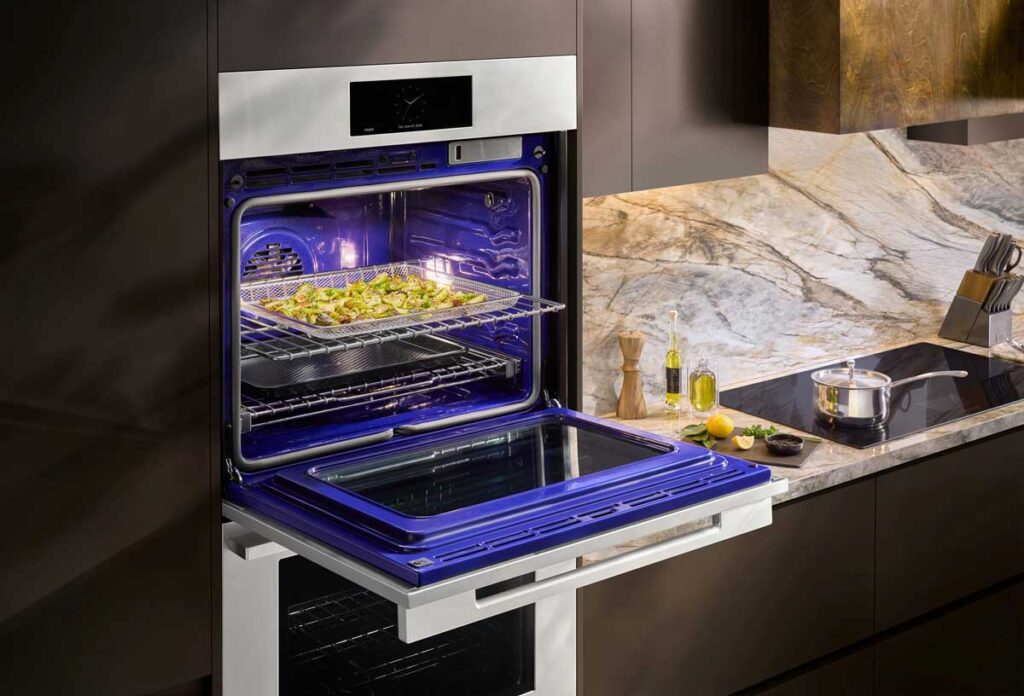Homeowners are looking to create elaborate backyard spaces, giving more opportunities to designers.

By Dianne M. Pogoda
Today’s backyards have become sophisticated extensions of indoor living spaces, often with seamless transitions via oversized sliders or folding glass panels. Designers now treat outdoor kitchens and living areas with as much attention to detail and with consideration for an all-weather space.
“If the client doesn’t already cook or entertain outside, we need to know how they envision using the space,” said Adam Gibson, CMKBD, principal of Adam Gibson Design in Carmel, Ind. “Because for some it’s a new idea; they may not realize how flexible the space can be. If there’s a roof, patio heaters can extend the season quite a bit.”
Candace Nordquist, CMKBD, CLIPP, of Candace Nordquist Interiors, Gig Harbor, Wash., said determining how the client intends to use the space, whether it will be an extension of the existing kitchen or if it needs to be standalone and have everything to be able to store, prepare and cook a meal, are the key first steps. Her minimum recommendation is a grill — preferably a built-in grill head — with a side burner, a small sink and fridge.
Start With the Grill
There are almost as many grill options as there are ways to cook a steak. “I always encourage clients to read up on different types of grills,” said Gibson. “In a perfect world, we’ll have a gas grill, a griddle, and a ceramic grill all under one huge exhaust fan with zones.”
Some considerations for gas grills and other amenities:
- Gas grills offer good value and provide many cooking options and accessories. An average family can usually do fine with a four-burner grill, but if entertaining large groups is more the norm, the homeowner might consider moving up to six burners, searing options and warming drawers.
- Some amenities that were once thought of as luxuries are now requested more often, including outdoor-rated pizza ovens and smokers, said Stapperfenne. “Smokers are either stand-alone units, or are integrated into the grill with a smoker drawer.”
- If there’s a roof over the cooking area, homeowners must consider whether the ceiling material is combustible, Gibson noted. Ventilation plays a large role, too. Select range hoods that are outdoor-rated to prevent fires or smoke clouding the seating area.
Durability Trumps All
The experts agree that the most important consideration when selecting appliances and materials is that they won’t corrode or deteriorate after prolonged exposure to the elements.
- “Marine grade #316 stainless steel is best for outdoor cabinetry and appliances in coastal areas, but if it’s a desert or mountain area, #304 may be sufficient,” said Gibson. “We don’t like to use faucets that contain rubber buttons as they may erode. If there’s direct sun, we have to consider materials that won’t deteriorate under UV rays, and refrigerators and ice makers should obviously not be in direct sunlight. So if there’s no natural shade, we create our own or we don’t install those units.”
- Sinks for outdoor kitchens should be stainless steel for greatest durability, and like lawn sprinkler systems, any appliance or feature that has a water hook-up will need to be winterized in climates that fall below freezing.
- Outdoor refrigeration is available at many price points and styles, from undercounter single-door to drawers, wine fridges, ice makers and beer taps, with varying grades of materials, size, color availability and other features, like digital temperature display, door locks, alarms or interior lighting.
- Surface materials for outdoor use should be UV resistant so they don’t fade in sunlight. Dekton earns high marks from the designers for countertops, and non-slip surfaces are especially important for flooring.
- “UV-stable materials, heat- and scratch-resistance are top priorities,” Nordquist said. “Products like Dekton counters offer great design and durability in outdoor spaces. Concrete is a great material in terms of flexibility and durability in design.”
Electronics, Lighting, and Other Features
Electronics are an increasingly important part of the outdoor experience. Just like any other kitchen or entertaining space, good lighting is essential for function and ambience.
- Consider task lighting in the cooking and prep area; pathway and stair lighting to ensure safe walking areas, and subtle area lighting to set the mood in the seating area.
- Weather-resistant outdoor TVs and sophisticated music systems are growing in prominence, and fire and water features add to the ambiance and function of the outdoor living space. For TVs, opt for models built expressly for outdoor use. Moisture and humidity, brightness and screen glare are special considerations for placement and any structure that’s built around the monitor.
Tying It All Together
When thinking about the overall design of the outdoor living space, consider outdoor-rated cabinetry for secure, sanitary storage. “Stainless steel cabinets come to mind first, but if you’re going for wood, use teak or cypress that can withstand the elements,” said Mann.
Other materials for outdoor cabinets are PVC or resin cast in a wood look and powder-coated stainless steel. Kitchen islands provide a cohesive look and, depending on size, define the cooking zone, prep area, and can offer seating like an interior kitchen island. Islands can come as kits ready-to-assemble, or framed on-site with an applied veneer, like stone, brick or stucco.
Whether a client has a postage-stamp lot or sprawling acreage, the space you can design with proper planning, the right appliances and a little creativity will allow them to expand their living space.
This article has been updated and was originally published on June 2, 2022.






















